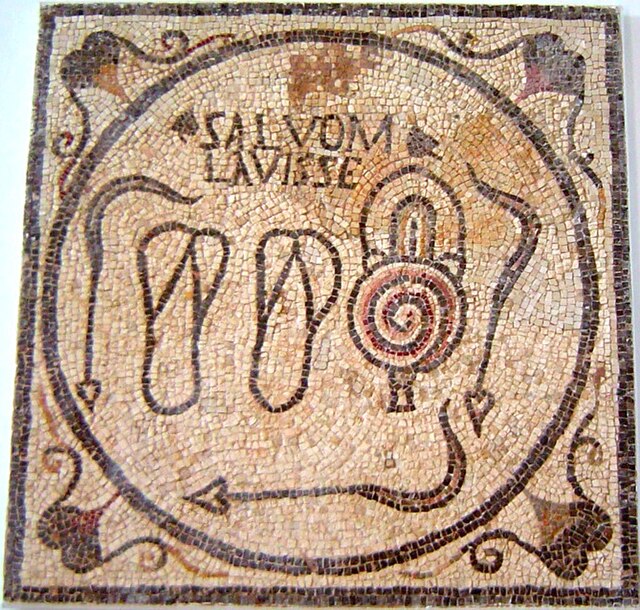The Roman Baths are well-preserved thermae in the city of Bath, Somerset, England. A temple was constructed on the site between 60 and 70 AD in the first few decades of Roman Britain. Its presence led to the development of the small Roman urban settlement known as Aquae Sulis around the site. The Roman baths—designed for public bathing—were used until the end of Roman rule in Britain in the 5th century AD. According to the Anglo-Saxon Chronicle, the original Roman baths were in ruins a century later. The area around the natural springs was redeveloped several times during the Early and Late Middle Ages.
The Roman Baths in the city of Bath, England
The statue of King Bladud overlooking the King's Bath carries the date of 1982, but its inclusion in earlier pictures shows that it is much older than this.
The Great Bath — the entire structure above the level of the pillar bases is a later construction
The "Gorgon head" from the Temple pediment
In ancient Rome, thermae and balneae were facilities for bathing. Thermae usually refers to the large imperial bath complexes, while balneae were smaller-scale facilities, public or private, that existed in great numbers throughout Rome.
Roman public baths in Bath, England. The entire structure above the level of the pillar bases is a later reconstruction.
Bulla Regia, inside the thermal baths
Mosaic bath sign from Sabratha, Libya, showing bathing sandals, three strigils, and the slogan SALVOM LAVISSE, "A bath is good for you"
Plan of the Old Baths (Forum Baths) at Pompeii







